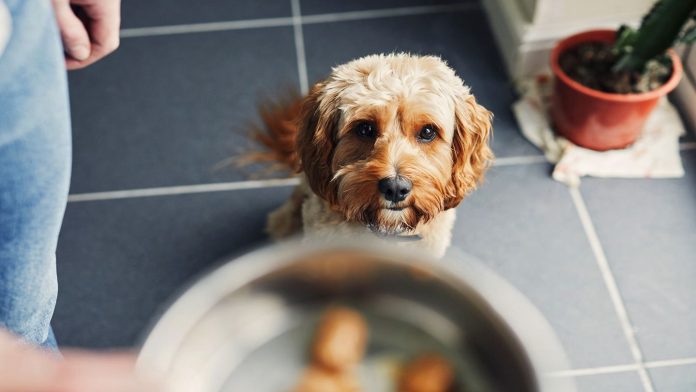Most dog owners aren’t following FDA guidelines on safely handling pet food, and that could lead to bacterial illnesses for animals and humans.
For most of us, food safety habits — like washing our hands before preparing a meal and giving our plate a rinse before placing it in the dishwasher — are second nature. But would it surprise you to know that you should be following those same protocols when feeding and cleaning up after your pet?
A new study, published on April 6 in the journal PLoS One, found that most U.S. dog owners don’t know and don’t follow the U.S. Food and Drug Administration (FDA) guidelines on safe pet food and dish handling. In this case, what you don’t know can hurt you. Contaminated pet food has been the source of multiple outbreaks of bacterial illness among dogs and humans, according to the authors.
“Pet owners should know that pet food bowls can harbor bacteria and that recommendations exist for minimizing that risk,” said lead author Emily Luisana, DVM, veterinarian at Friendship Hospital for Animals in Washington, D.C, in a statement.
Pet food and treats, like many other types of food, can be contaminated with harmful bacteria that cause foodborne illnesses, such as salmonellosis and listeriosis, according to the FDA.
Even Many Veterinary Professionals Aren’t Aware of Safety Recommendations
According to Dr. Luisana, the idea for the study came from “watercooler-type” conversations among veterinary nutritionists. “We realized that, when it came to our own pets, we all had different pet food storage and hygiene practices,” she said. The recommendations around safety for pet food and storage were relatively unknown, even among veterinary professionals, she added.
“Once we investigated what we should be doing, we noted the FDA recommendations regarding these habits were relatively sparse in comparison with the human recommendations and the outcome of these recommendations had not been studied,” said Luisana.
Less Than 5 Percent of Dog Owners Are Aware of FDA Guidelines
To find out what the average pet owner knew about pet food safety, investigators surveyed 417 dog owners. They found that less than 5 percent were aware of the guidelines, and many owners did not follow many of the recommendations.
Pet food and dish handling guidelines include the following:
Wash hands for at least 20 seconds prior to handling
Do not use bowl as a scooping utensil
Wash the dish and scoop with hot water for at least 20 seconds after each use
Wash hands for 20 seconds after handling food.
To better understand the effectiveness of the FDA recommendations, the researchers tested 68 household dog food dishes for bacterial contamination. After initial testing, they divided the owners into three groups with different instructions for implementing food handling guidelines.
One group followed FDA guidelines for pet food and dishes, one group followed those guidelines in combination with FDA’s human food handing protocol, and a third group served as the control — they were made aware of the guidelines, but they could choose whether or not to change their behavior.
Investigators tested the dishes again after one week and found significantly reduced contamination of dishes from the owners who followed the FDA’s pet food handling guidelines, either alone or in combination with the FDA’s human food handling protocol, versus dishes from owners who were not asked to follow either set of recommendations.
Even After Learning of Safety Guidelines, Many Dog Owners Reluctant to Follow Them
“I was surprised that our control group did not show a reduction in bacterial counts even though they were made aware that FDA guidelines existed, and the bowl would be sampled again,” said Luisana. This shows that bringing awareness of the current recommendations is not enough to instigate a change in behavior, she added.
The dog owners in the “guideline-following” groups also showed a lack of willingness to continue to follow FDA guidelines after the week-long intervention — a mere 20 percent reported that they were likely to follow the instructions long-term, and only 8 percent said they were likely to follow all the given instructions. This finding highlights the need for guidelines that are feasible as well as effective, the authors note.
Pet owners should know that pet food bowls can harbor bacteria and that recommendations exist for minimizing that risk, says Luisana. “Although we need further studies to assess the implications of our findings, I hope veterinarians will consider the potential impact that feeding hygiene may have, for example, in cases of zoonotic disease, in immunocompromised patients,” she says.
Zoonotic diseases are illnesses that can spread between animals and people.





























